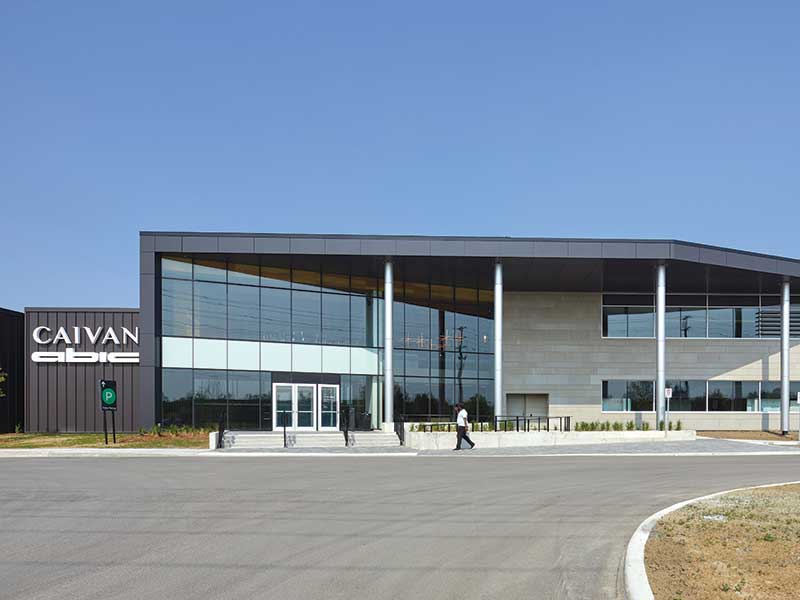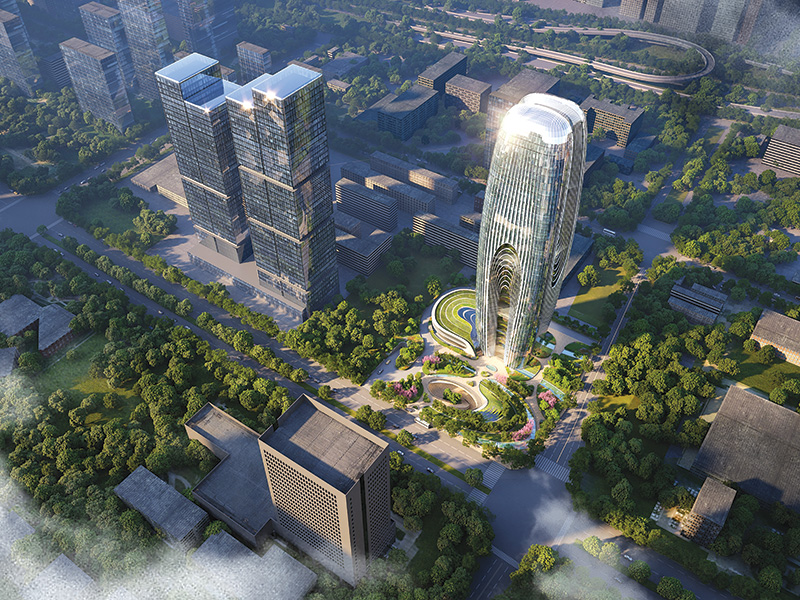Fact File
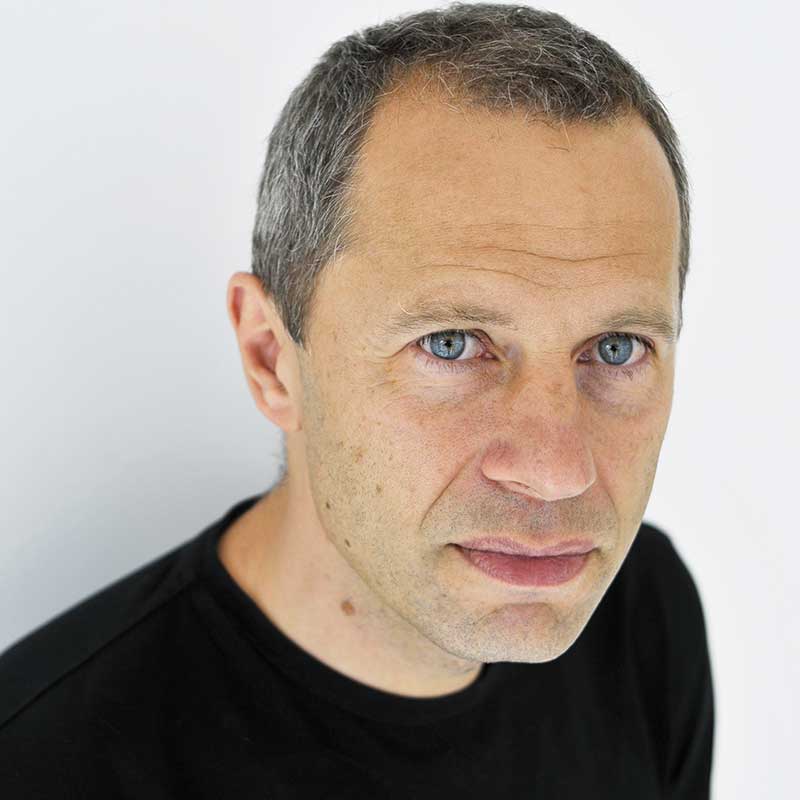
Client: NMBS-Holding
Architect Firm: Dietmar Feichtinger Architectes
Total surface parking: 20 320 m2
Shop area: 1 590 m2
Offices: 100 m2 for the station
Roof covering surface: 22 000m2
Parking bus and tramway: 17 000 m2
Environment Features: High Quality Environment (HQE) certificate, Roof made of recycled and recyclable translucent polycarbonate; 1700 photovoltaic panels on parking roof; production 520 000 kWh/year
Photos: David Boureau
It is more than a hundred years since King Leopold II had the current Ostend station in Belgium built with a magnificent architecture. Just like the city, the station has also expanded and become a popular transport hub, where thousands of passengers find their way every day to take a train, tram, bus, ferry or a cruise ship. However, the increasingly complex infrastructure developed over the years is a confusing mix of buildings and parking lots.
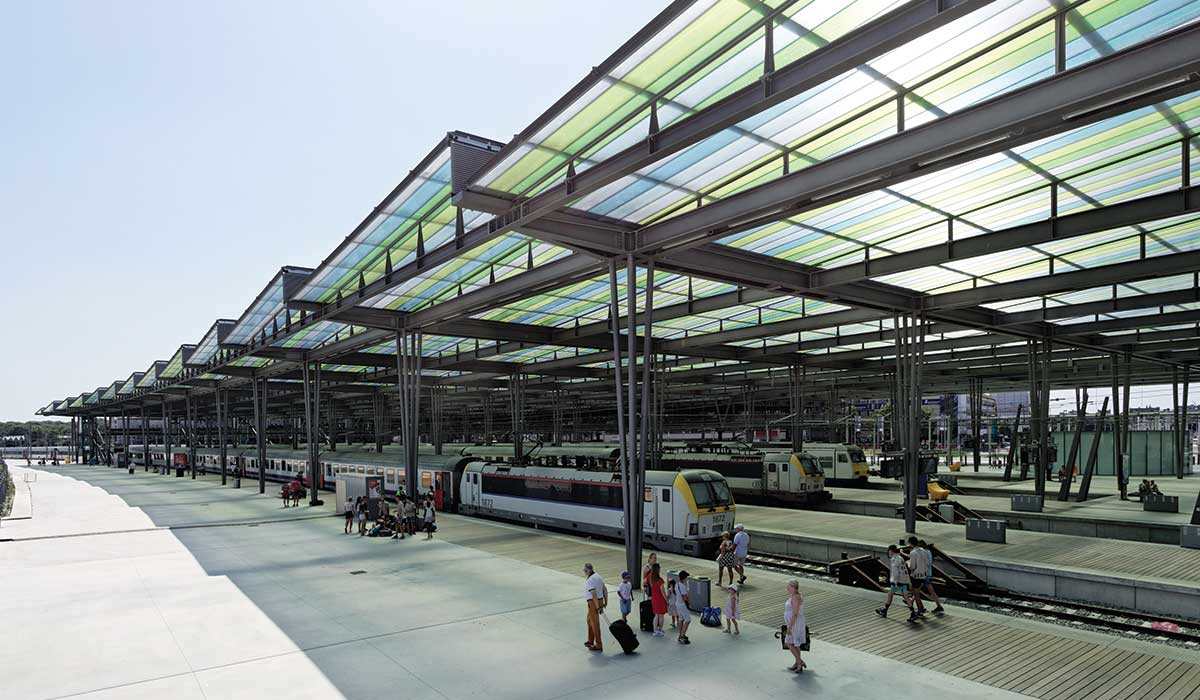
A large-scale project called “station aan zee” started in 2012 to renovate and revitalize the station and make it a leading transport hub. It provides for the reconstruction of car parks and tram station; renovation without violating the building’s classification; construction of new platforms; construction of a large canopy; demolition of part of the waterfront buildings to create pedestrian access; relocation of the tram depot to a former port area; and beautification of the station square.
The old tram station was demolished in 2019. As the remaining walls of the exit room were classified, it was decided to demolish the roof and other walls and to keep the only classified wall, without a roof. The new canopy partly spans this old wall. The bicycle parking is now underground; the tram station is closer to the train station, and a multi storey car park has been built along the train platforms.
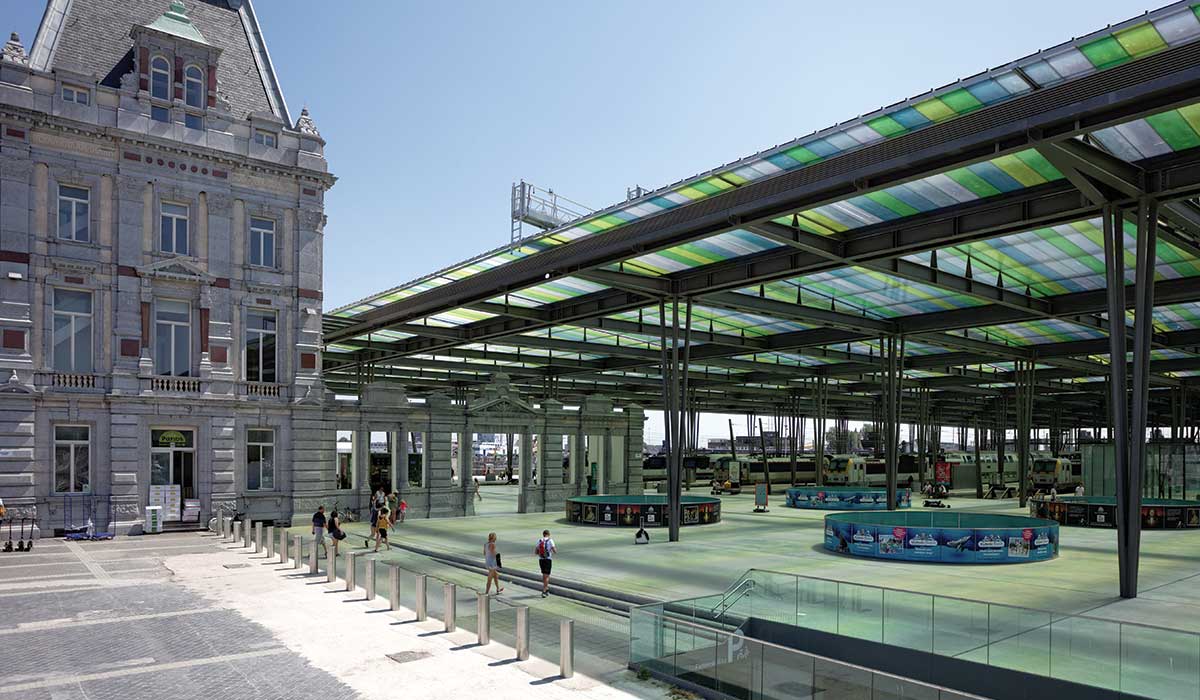
A light and transparent canopy
Under the new roof all functions are naturally integrated. Stairs, elevators and the footbridge are suspended from it. Taking advantage of this shelter, the intermediate accesses remain light and airy, and provide pleasant visibility from both sides under the roof, from the hall and the platforms. The station installations are suspended, such as signage, billboards, electrical installations and the free floor space in the hall and platforms enriches the visual clearance of the space. The bicycle parking lot installed under the roof is largely open with a series of round atriums providing natural lighting and ventilation.
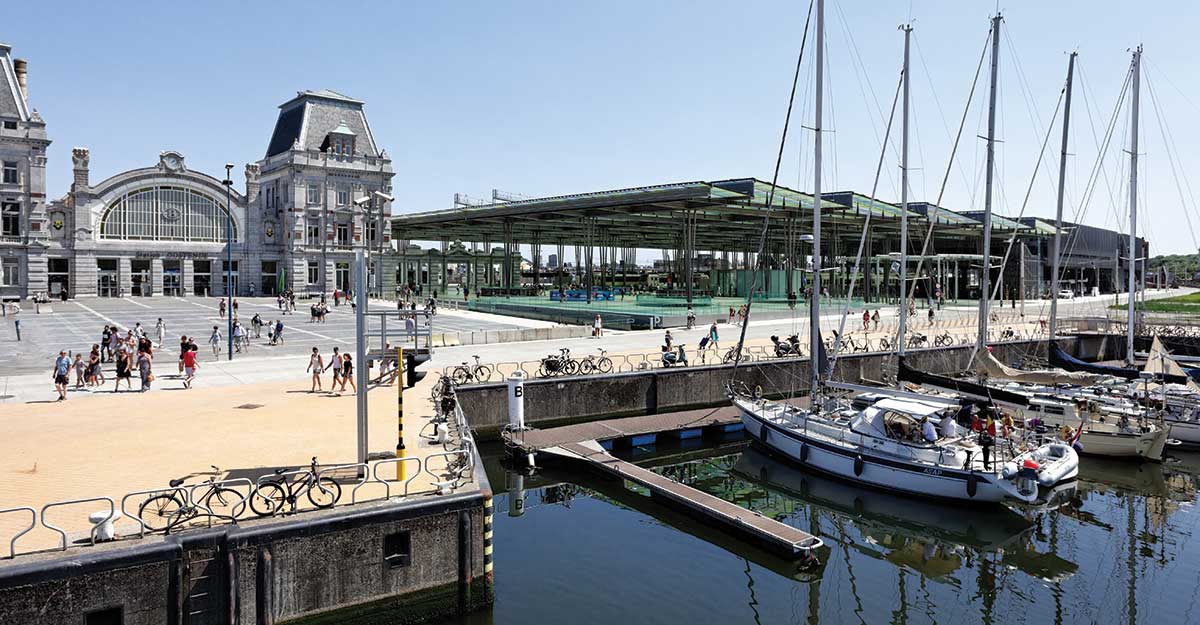
Colorful scales
The roof consists of polycarbonate panels placed on a steel structure. The impact of the structure on the platforms and the hall is minimized. The translucent panels offer a bright and welcoming atmosphere. Arranged in scales, they allow in the interstice an effective natural ventilation. There are many variations of light under the roof, depending on the exterior brightness and the color scheme. The coloring of the polycarbonate also provides sun protection and avoids direct glare.
The roof extends to the existing station. Adjacent to the new hall, this space on the ground floor is equipped with kiosks. The public toilets are installed in the basement and accessible from the platform level by a staircase and a lift.
Thus, the space offers transparency from the station square to the platforms in the foreground and then to the port and ferries. With the lighting of the car parks at night, the volume becomes a luminescent landmark in the city. The project is developing horizontally, supporting this canopy idea. An unobstructed view of the marina and seaport is available to users. The 32m deep office floor includes interior patios and accessible terraces, all of which are naturally lit.
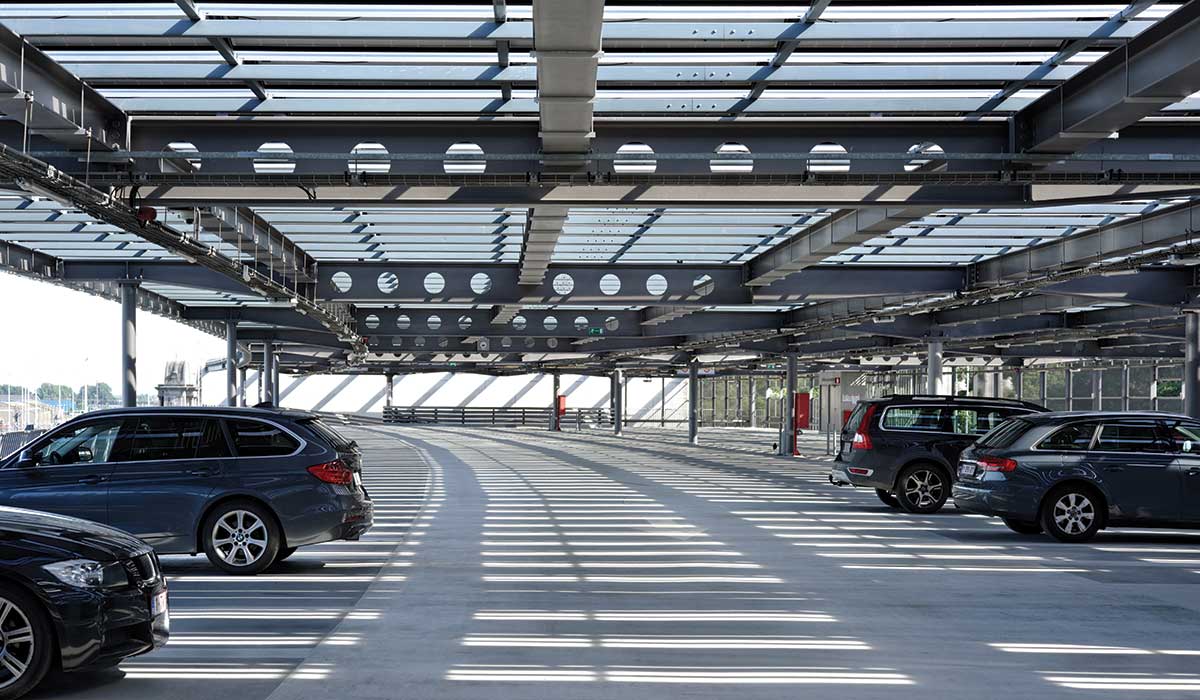
A continuous structure
The metal structure of the roof consists of slender piles, four tubes that meet on the base (welded junction). They are embedded into the roof structure and form a beam. The base of the slender piles is articulated. The structure is blocked at the linking bridge leading from the parking to the platforms. This allows temperature expansions in the longitudinal direction; embedding moments are avoided accordingly.
The structure is made up of main beams and transverse-beams with an interaxial distance of 15m, formed by double I-shaped profiles. These reconstituted profiles allow the integration of channels and electrical networks. The roof structure forms a rigid plate. By the slenderness of the piles and their flexibility, thermal expansion is absorbed. The roof forms a diaphragm, an expansion joint along the car park allows differential deformations due to temperature. Cross beams spaced 5 m cross this structure to support the joists supporting the polycarbonate sheds. The south part of the roof is completely covered with photovoltaic panels.
The car park with 670 parking spaces consists of a metal structure in continuity with the canopy structure grid. Vertical connections - open stairs - punctuate the building. This long building forms a facade towards the city. The metal mesh provides natural ventilation for the car park and serves as a filter towards the city. Because of its continuity it provides sun protection.
Horizontal openings allow framed views. In the office area, a curtain wall façade closes off the spaces. The patios and east facade are equipped with removable blinds. At street level, vertical metal rods close the building to the public space. The rods extend around the stairs and form the lower closure and partial guardrail of the stairs.
The supporting structure of the building is made of steel. Collaborative slabs composed of a steel tank with a concrete slab - form the floors. The posts are circular. The embedding of the central posts serves as a bracing. In the office area, the structure is protected by an intumescent paint. The composition of the access ramp is identical to the floor slabs. A lattice structure at the top supports the suspension rods of the lower part of the ramp.
